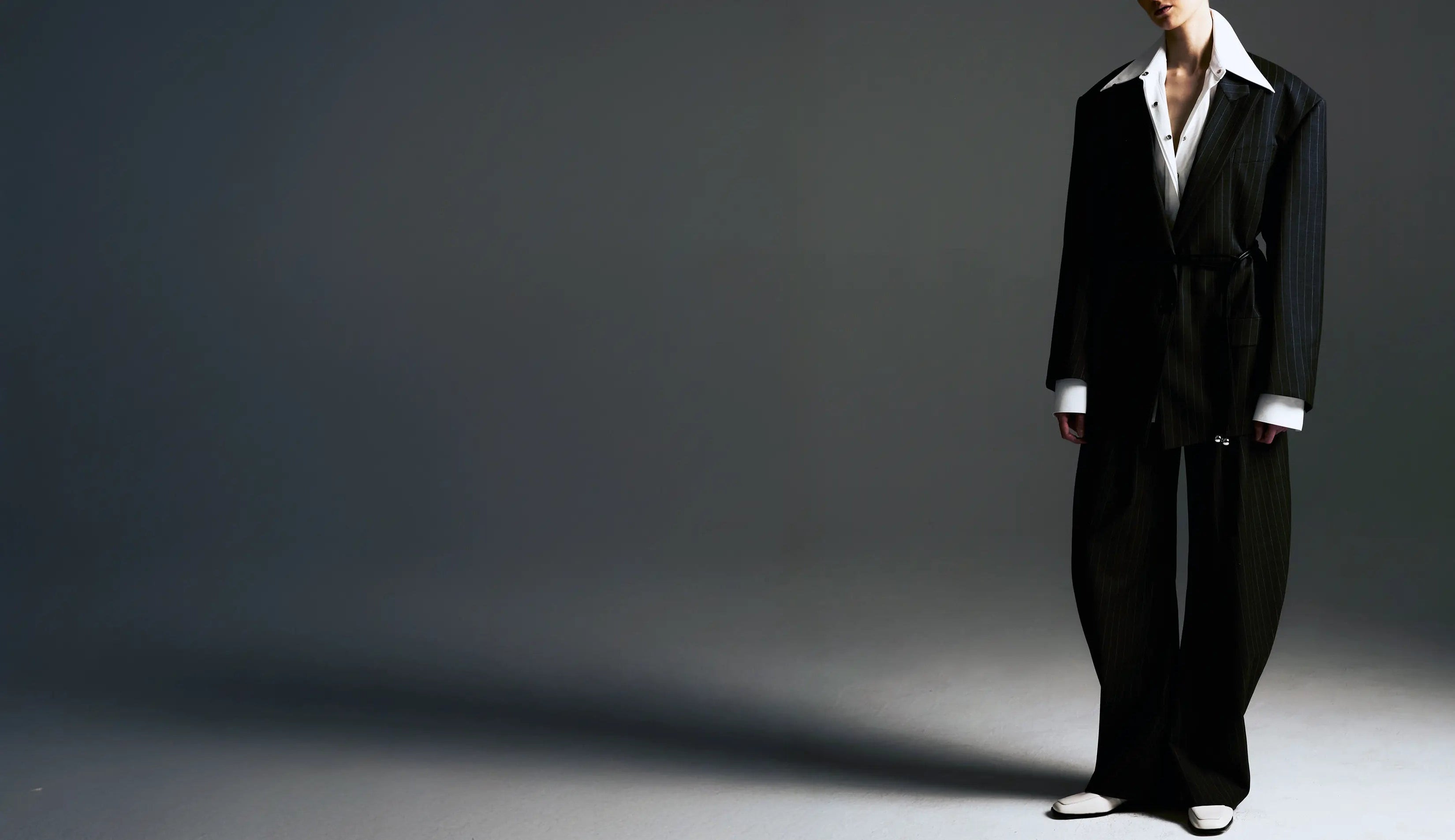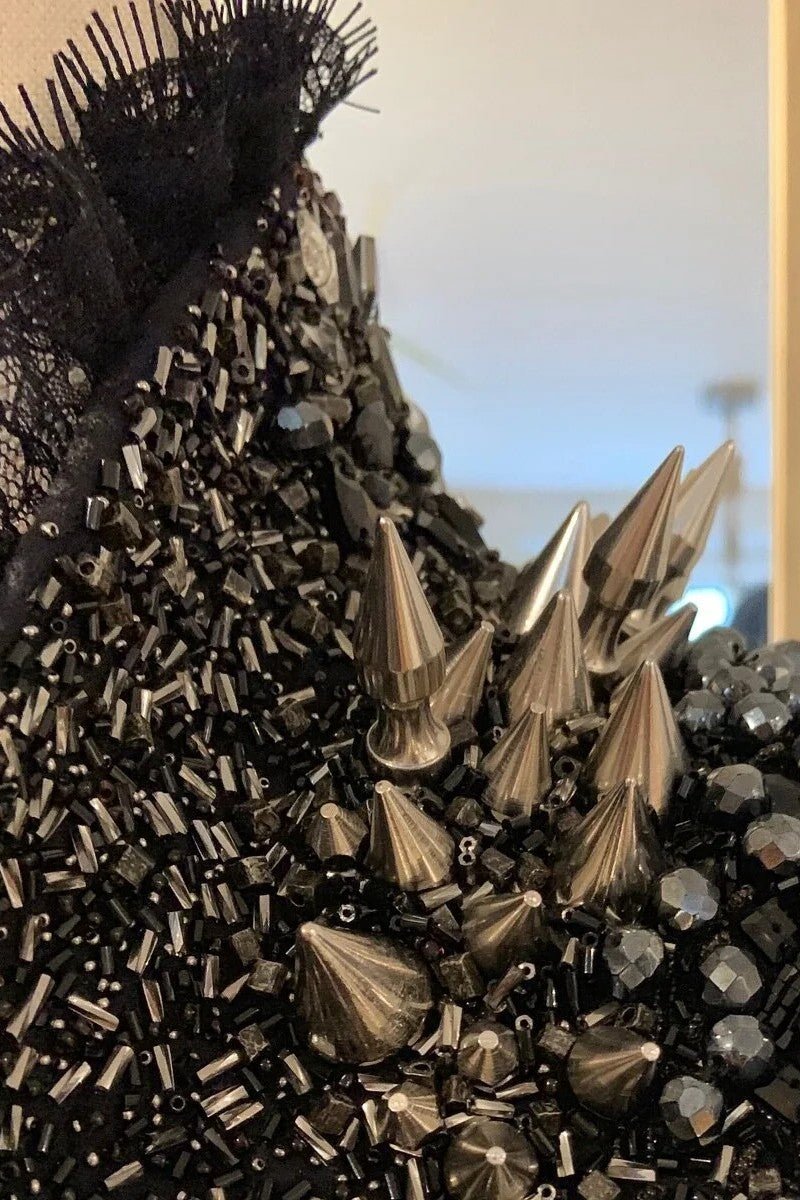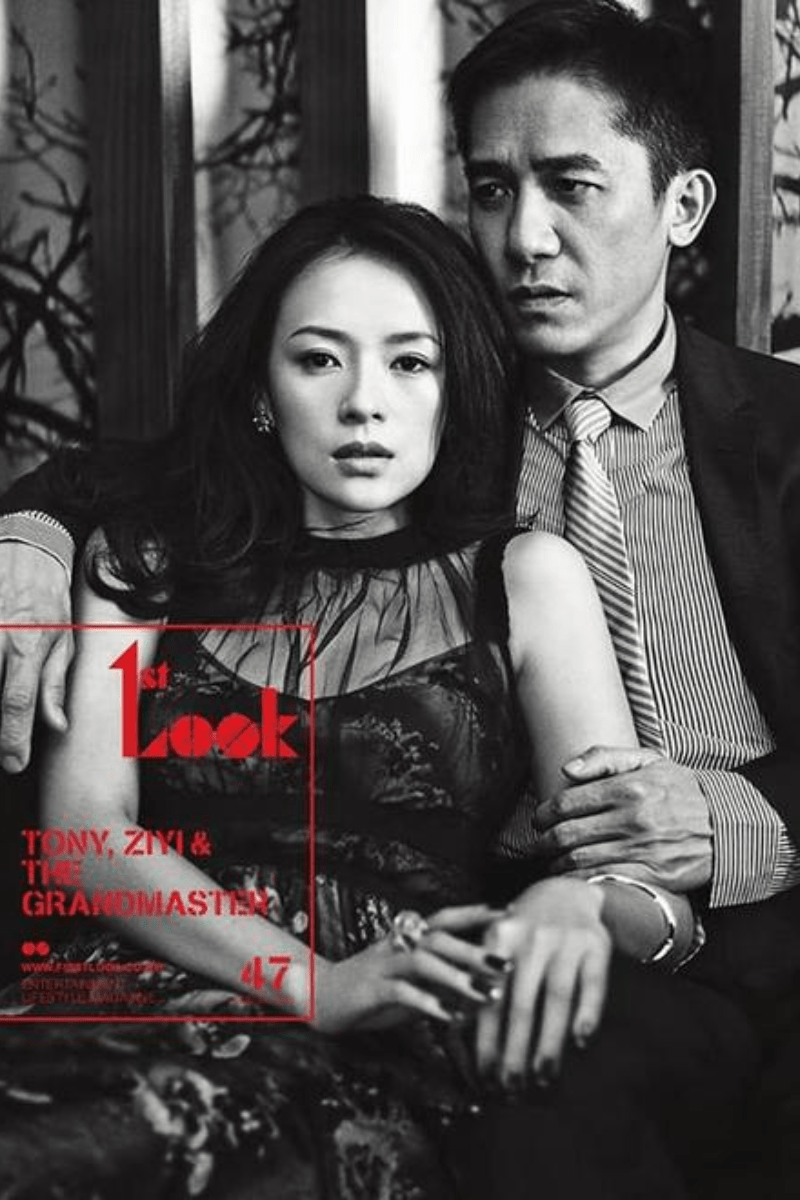When Ancient Porcelain Became Modern Armor
The cultural observer studying Guo Pei's exhibition piece witnesses something unprecedented: traditional Chinese decorative arts translated through contemporary couture construction techniques that rival anything produced in European ateliers. The porcelain patterns embedded in the gown's surface demonstrate sophisticated understanding of how historical motifs adapt to modern silhouette demands while maintaining their cultural significance.
The mermaid silhouette's construction requires technical expertise that connects directly to traditional Chinese garment engineering principles. The fitted bodice employs princess seams strategically placed to accommodate the porcelain-inspired surface treatments while maintaining structural integrity that supports the dramatic flare. This technical foundation enables the cultural synthesis that makes neo-traditional Chinese fashion globally compelling.
Chinese designers discovered that authentic cultural translation creates competitive advantage in international luxury markets. The porcelain motifs function as more than decorative elements—they represent sophisticated pattern-making that considers how traditional designs interact with contemporary construction methods, creating garments that educate as well as aesthetically astound.
Architectural Precision in Cultural Translation
The gown's construction demonstrates how traditional Chinese design principles inform contemporary pattern-making approaches. The ceramic patterns require precise placement that honors the original decorative logic while adapting to the body's three-dimensional architecture. Each motif placement considers how the pattern flows across seam lines, how it interacts with the garment's movement, how it maintains visual continuity despite construction necessities.
The cobalt blue and white color palette reflects sophisticated understanding of how traditional Chinese color theory translates to contemporary luxury fashion contexts. The color relationships honor historical precedent while creating visual impact that photographs dramatically under museum lighting conditions. This technical consideration enables cultural authenticity alongside aesthetic innovation.
The mermaid silhouette's engineering requires internal structure that provides shape without restricting movement—likely involving corseted bodice construction with strategic boning placement that accommodates the porcelain-inspired surface treatments. This technical complexity enables the dramatic visual effect while maintaining wearability that contemporary couture demands.
Manufacturing Heritage Enabling Contemporary Innovation
The surface treatment techniques visible in the gown demonstrate Chinese artisans' evolution from traditional craft practitioners to contemporary couture collaborators. The porcelain-inspired patterns require handwork that connects directly to historical Chinese decorative traditions while meeting luxury fashion's technical requirements for consistency and durability.
Chinese couture houses developed sophisticated strategies for integrating traditional decorative techniques with contemporary construction methods. The porcelain motifs require specialized application techniques that consider how different materials interact with the base fabric while maintaining the visual impact that makes neo-traditional Chinese fashion globally recognizable.
The manufacturing precision required for this level of cultural translation reflects decades of accumulated expertise in both traditional crafts and contemporary fashion production. Each technical decision considers how historical knowledge adapts to modern requirements while maintaining the cultural integrity that distinguishes authentic Chinese couture from superficial appropriation.
Color Psychology Through Cultural Intelligence
The cobalt blue and white palette demonstrates sophisticated understanding of how traditional Chinese color relationships function in contemporary luxury fashion contexts. The color choices reference specific periods in Chinese ceramic history while creating visual impact that resonates with international audiences unfamiliar with the cultural specifics.
Traditional Chinese color theory emphasizes harmony and balance rather than contrast and conflict. The porcelain-inspired patterns employ color relationships that create visual depth through subtle variations rather than dramatic opposition. This approach reflects cultural values that prioritize sophistication over obvious display, creating garments that reward close examination while maintaining strong visual impact.
The color application techniques require understanding of how different blues interact with various lighting conditions—museum display, photography, runway presentation, social occasions. This technical consideration enables cultural authenticity while ensuring the garment functions effectively across diverse contexts where contemporary luxury fashion appears.
Digital Age Preservation of Analog Traditions
The gown's exhibition context reflects contemporary Chinese fashion's sophisticated approach to cultural education through visual presentation. The Legion of Honor setting provides cultural validation that positions Chinese couture within global luxury fashion discourse while educating international audiences about traditional Chinese aesthetic principles.
Neo-traditional Chinese fashion succeeds by creating garments that function as cultural ambassadors, teaching international audiences about Chinese heritage through aesthetic appreciation rather than academic instruction. The porcelain-inspired patterns provide accessible entry points for cultural understanding that build foundation for deeper appreciation of Chinese creative traditions.
The exhibition strategy demonstrates how contemporary Chinese designers approach global market expansion through cultural intelligence rather than cultural adaptation. The garments maintain authentic Chinese aesthetic principles while creating visual impact that communicates across cultural boundaries without requiring cultural translation.
Technical Innovation Serving Cultural Continuity
The construction techniques visible in the gown represent synthesis of traditional Chinese garment engineering with contemporary luxury fashion requirements. The fitted bodice construction employs European corsetry techniques adapted to accommodate Chinese decorative elements while maintaining structural integrity that supports the dramatic silhouette.
The porcelain-inspired surface treatments require specialized attachment methods that consider how decorative elements interact with the base fabric during wear. Traditional Chinese textile techniques provide solutions for securing embellishments while maintaining flexibility that enables movement without compromising the decorative integrity.
The seaming approaches visible in the garment demonstrate how Chinese couture adapts traditional construction methods to contemporary fit requirements. The princess seams enhance the mermaid silhouette while providing structural foundation that supports the porcelain-inspired surface treatments without creating bulk that compromises the garment's architectural lines.
Economic Impact Through Cultural Authenticity
Guo Pei's international recognition demonstrates measurable economic value creation through authentic cultural expression. The global attention generated by sophisticated cultural presentation creates commercial opportunities that extend through luxury fashion, cultural tourism, and creative industry development while building cultural soft power that benefits broader Chinese creative economy.
Chinese couture's investment in authentic cultural presentation reflects understanding that international luxury markets increasingly value cultural intelligence alongside technical excellence. The porcelain-inspired designs demonstrate cultural confidence that creates competitive advantage while supporting domestic craft preservation through commercial viability.
The economic success of neo-traditional Chinese fashion validates investment in traditional craft skills and contemporary design education that enables sophisticated cultural translation. The results demonstrate how genuine cultural dialogue creates sustainable luxury market positioning that honors heritage while generating measurable commercial value.
Educational Impact Through Aesthetic Experience
The exhibition setting serves as cultural education platform that teaches international audiences about Chinese aesthetic principles, craft traditions, and contemporary creative capabilities through visual appreciation. The porcelain-inspired patterns provide tangible connections to Chinese cultural heritage that create deeper understanding than academic instruction alone could achieve.
Chinese couture's educational approach reflects sophisticated understanding of how aesthetic experience influences cultural perception. The garments create emotional connections that build foundation for cultural appreciation while demonstrating contemporary Chinese creative capabilities that challenge historical stereotypes about Chinese fashion as mere manufacturing.
The styling strategy creates cultural dialogue opportunities that extend individual artistic achievement into broader cultural representation. The exhibition enables constructive cultural exchange that builds understanding and appreciation while showcasing Chinese fashion's technical sophistication and cultural depth.
Contemporary Luxury Integration
International luxury fashion houses now study Chinese neo-traditional approaches for cultural innovation strategies that honor heritage while creating contemporary relevance. The porcelain-inspired techniques provide templates for incorporating traditional elements without compromising modern aesthetic standards or construction requirements.
The success of Chinese neo-traditional fashion demonstrates how cultural authenticity creates competitive advantage in global luxury markets. The porcelain motifs offer distinctive aesthetic vocabulary that differentiates Chinese couture from European luxury traditions while maintaining technical standards that justify premium positioning.
The construction techniques that enable Guo Pei's cultural synthesis provide solutions for contemporary designers seeking to integrate cultural heritage with modern luxury requirements. The methods demonstrate how traditional knowledge enhances rather than constrains contemporary creative possibilities.
Gender Expression Through Cultural Evolution
The gown's approach to feminine presentation reflects contemporary Chinese fashion's sophisticated understanding of how traditional aesthetics adapt to modern identity expression. The porcelain-inspired patterns emphasize cultural sophistication and artistic appreciation rather than conventional feminine display, creating alternatives to Western luxury fashion's gender presentation models.
Neo-traditional Chinese fashion enables authentic self-expression that honors cultural heritage while accommodating contemporary lifestyle requirements. The garment construction provides templates for formal wear that communicates cultural intelligence alongside personal style, appealing to audiences seeking alternatives to generic luxury fashion options.
The styling approach demonstrates cultural confidence that enables effective cross-cultural communication through aesthetic appreciation. The garment functions as cultural ambassador while providing sophisticated formal wear option that maintains appropriateness across diverse international contexts.
Future Trajectories in Cultural Fashion Evolution
The success of Guo Pei's neo-traditional approach suggests broader possibilities for how cultural heritage might inform contemporary luxury fashion development. The template demonstrates how authentic cultural expression supported by technical excellence creates sustainable competitive advantage that transcends temporary trend cycles.
Chinese fashion's integration of traditional elements with contemporary construction indicates shift toward multicultural luxury landscape where diverse cultural traditions inform global fashion development rather than conforming to single aesthetic standard. This evolution creates opportunities for innovation that honors multiple cultural traditions while advancing fashion sophistication.
The confident cultural presentation while achieving international recognition demonstrates how contemporary global luxury increasingly values cultural intelligence alongside technical innovation. The synthesis suggests future possibilities for cultural exchange that enriches fashion development while respecting diverse traditions and creating authentic aesthetic alternatives.
The porcelain patterns catch museum lighting like captured history, each cobalt stroke connecting ancient ceramic traditions to contemporary couture innovation. Guo Pei's dramatic silhouette represents more than fashion achievement—it documents cultural evolution where ancestral wisdom informs contemporary creativity while serving international audiences hungry for authentic cultural expression through luxury fashion. The mermaid gown speaks multiple aesthetic languages fluently while maintaining distinctly Chinese accent, proving that cultural depth and global appeal can coexist when supported by uncompromising commitment to technical excellence and authentic artistic vision.




